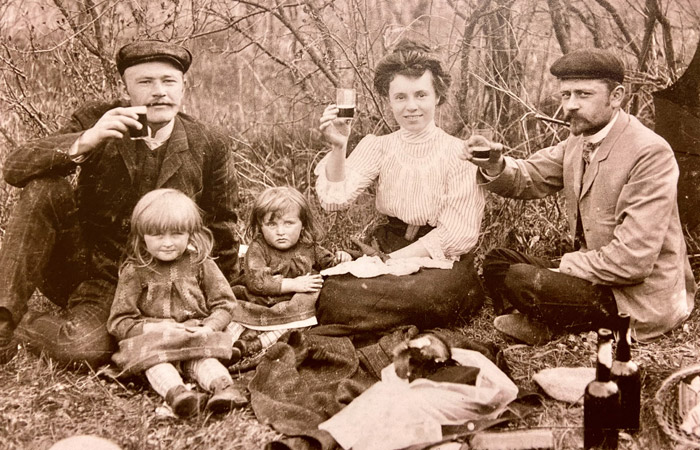Village News
How to Eat Well – Part Two

“The destiny of nations depends upon the manner in which they feed themselves.” ~ Anthelme Brillat-Savarin
The above quote was said by French gastronomist Anthelme Brillant-Savarin two hundred years ago. In the metropolitan regions of France, they prioritize the eating process itself, not just what they eat. The citizens of Provence, France enjoy some of the best health in the world. Here they still eat like Mennonites, Indigenous and other traditional cultures used to eat – according to the seasons and from what their land can offer them. Meals, traditionally, were sit-down affairs that engaged the whole family. You would not see anyone eating on the run, just the odd hunter chasing after game to bring back to the village to share together.
In his book, In Praise of Slow, Carl Honoré dedicates a whole chapter on how eating slower is better for our health:
There is something in the nature of cooking and eating together that forms a bond between people. It is no accident that the world “companion” is derived from Latin words meaning “with bread”. A relaxed, convivial meal has a calming, even civilizing effect, smoothing away the smash-and-grab haste of modern life. The Kwakiutl people of British Columbia warn that fast eating can “bring about the destruction of the world more quickly by increasing the aggressiveness” in it.
Studies show that children who eat with family regularly do better in school and are less likely to get into drugs and deal with obesity. These are three very good reasons families should make regular eating together a priority! When my kids were younger, we would start the day by having breakfast together and sharing supper on most days. Recently, as they are older and working and going to university, we have different schedules. Yet, we still take time for ‘night snack’ at the end of the day. The conversations we have during these shared meals are meaningful and life-giving.
For those working during the day, take time to have lunch with your colleagues. It will do wonders for your relationships and your health. Constantly eating alone while working on the next assignment is not good for digestion and nutritional uptake. Busy Mennonite farmers would usually make it home for lunch, and when really busy with the harvest, family members would take the lunch to them and take time to eat it together.
Mennonite food reveals a rich culture and history. Our food tells a story of our religious beliefs, ethnic traditions, socio-economic realities, local landscapes, and international migrations. Mennonites ate a lot of carbohydrates because they had to physically work hard to survive. As I tell guests who order the ‘vereneke (perogies) lovers platter’ at our restaurant, “this is a meal to build a farm on or to survive a winter with!” The many Ukrainian and Russian aspects of our food reveals that in recent history we were linked to these places and their culture, while our love for portzelky (doughy, deep-fried New Year’s cookies) show that we came from the Netherlands before that. May we not forget where we have come from and keep eating our traditional foods together.
Happy New Year from your friends at Mennonite Heritage Village (MHV)! As you think about your year-end giving, please remember MHV. In addition to preserving Mennonite food and experiences for the next generations, we provide life-giving community programming throughout the year. This includes meaningful work for our senior volunteers, school programs that ground children in Mennonite heritage and historical knowledge, and families that come to life with every village visit.




